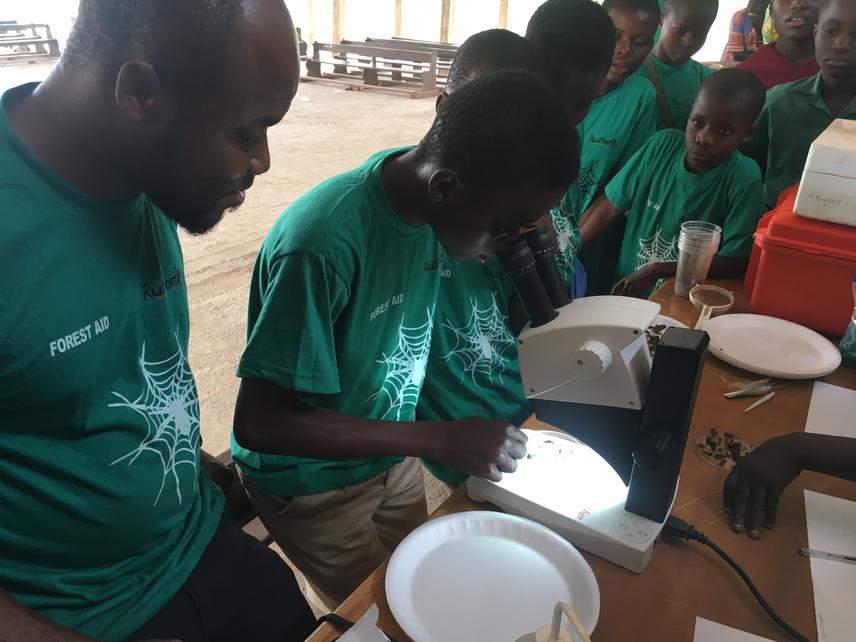Frederick Gyasi Damptey
Other projects
16 Apr 2021
Biodiversity and Ecosystem Services Assessment of Urban Green Spaces: Education, and the Use of Citizen Science in Monitoring and Conservation
24 May 2023
Multi-Taxon Biodiversity Survey of Threatened Ecosystems Along a Climatic Gradient: Educational and Citizen Science Approaches in Biodiversity Conservation
Decades after restoring a post-mine area into a community forest supposedly capable of providing ecological and socio-cultural benefits to local communities, there is the need for a systematic assessment to evaluate how successful management have been in restoring once disturbed landscape into an ecosystem supposedly capable of providing services and benefits to society. Using citizen science (elementary students and community member volunteers) with a particular focus on field-based research and biodiversity awareness campaigns, this project aims to quantify the levels and dynamics of selected arthropod groups for the creation of a baseline database for habitat conservation, research and education in the area. This engagement will improve the awareness of community members for the ecological roles of arthropods in the forest. Incorporating local community members in this project also aims to build a strong partnership for future management of the forest and increases the community’s social acceptability for conservation projects.

Considerable resources (funds, time and effort) have been invested in restoring an abandoned post-mining landscape into a community forest supposedly capable of providing ecological and cultural benefits to local communities in Ghana. Decades after restoration, the need for a systematic assessment is needed to evaluate the success of this project.
In the coming years, the community forest will be handed over to the local communities to continue with its management. This step requires community members to be trained to address fundamental conservation challenges. Through citizen science, community members (including school children) are going to be engaged to actively participate in diversity assessment (arthropod diversity in particular) and conservation outreach programs.
The community forest will be demarcated into different zonation’s which will be sampled for arthropod diversity by citizen scientist with the assistances of other professionals (ecologist, educationist, entomologist etc.). The structure and the vegetation characteristics of each zone will also be quantified using dendrometric indicators to support and explain differing patterns in arthropod community composition in the restored area compared to other natural reference forests.
Arthropod sampling will rely on the use of pitfall trapping (locally made by Citizen Scientist) in a 20 m x 20 m quadrats demarcated in each zone to sample ground-running arthropods. In addition, a visual survey method for web building spiders (Churchill & Arthur 1999) at shrub height, which involves the removal of spiders by hand from all vegetation strata up to shrub height, will be further employed to sample spiders living on leaves, branches, and other plant parts. Sampling butterflies will rely on surveys of 200 m transects.
The final data from the arthropod sampling and the vegetation attributes will be related and jointly analyzed using univariate and multivariate analyses and results communicated to the general public, government ministries etc. through publications, reports, radio talk shows, demonstrations etc.
This project will help community members, including students, to gain knowledge about biodiversity, increase their interest in science and the environment and will change their attitude towards the environment (empathy for insects and their habitats) as well as increase their stewardship. The involvement of students will introduce indigenous conservation approaches to management. Their participation will finally help to improve scientific literacy and skills through first-hand experience. This will also offer the opportunity to connect young people to nature and monitor the next generation of environmental stewards.